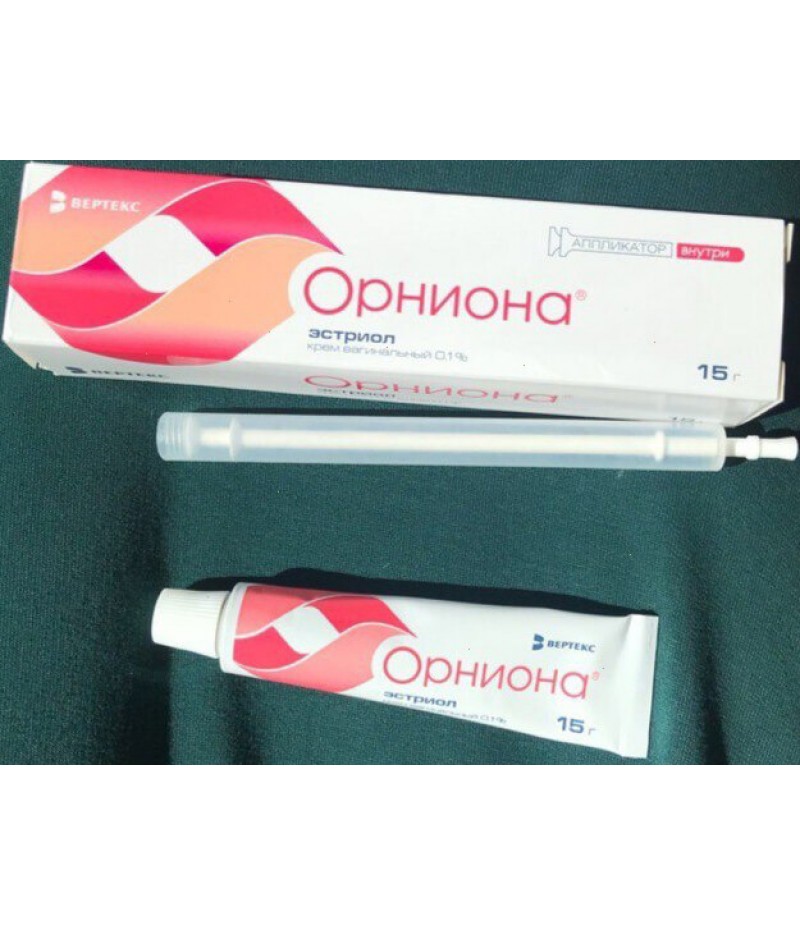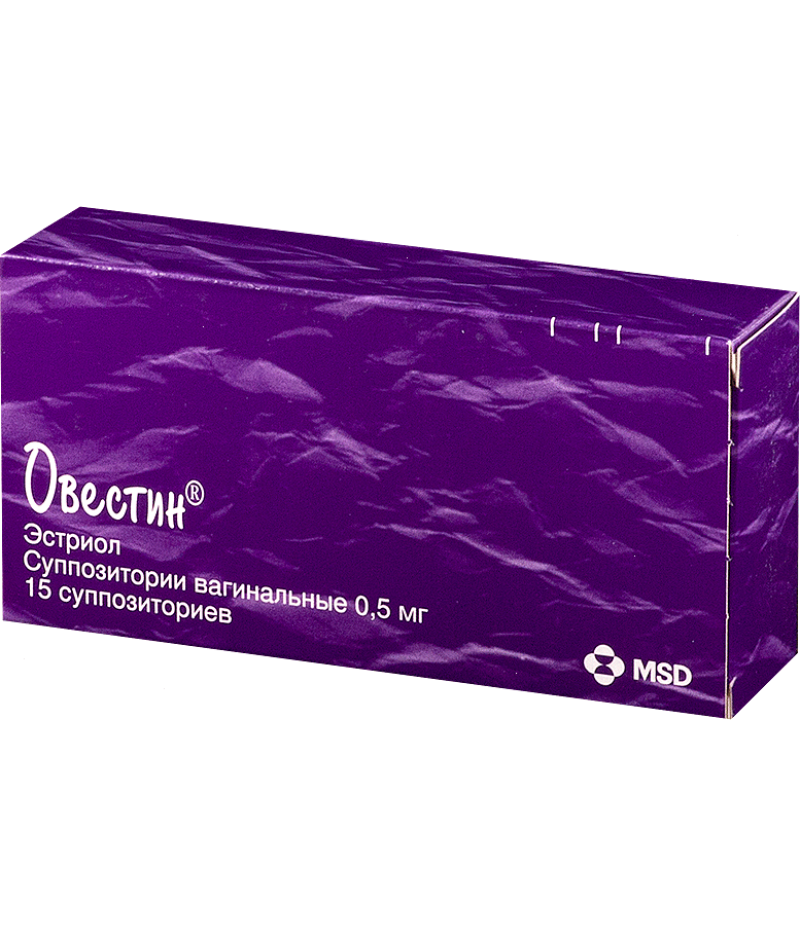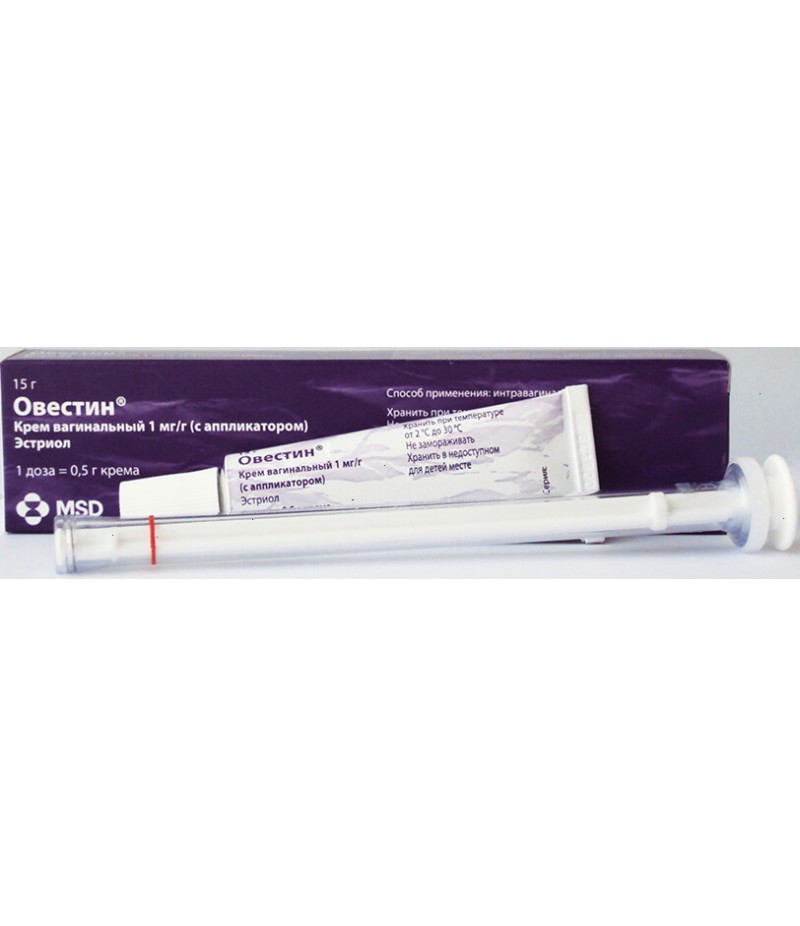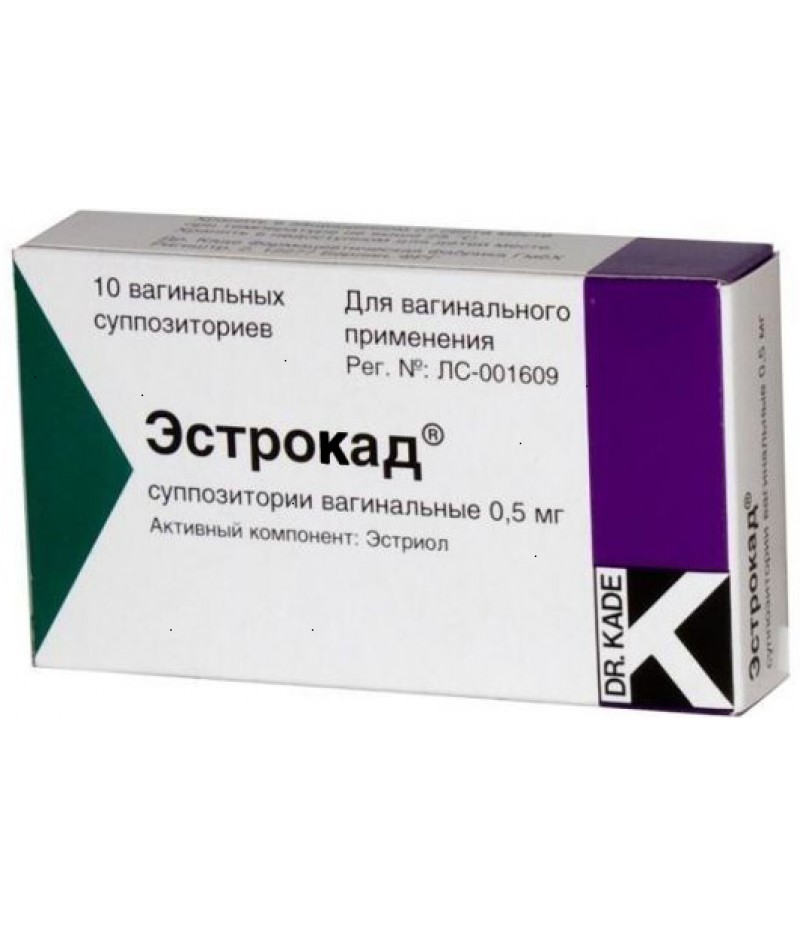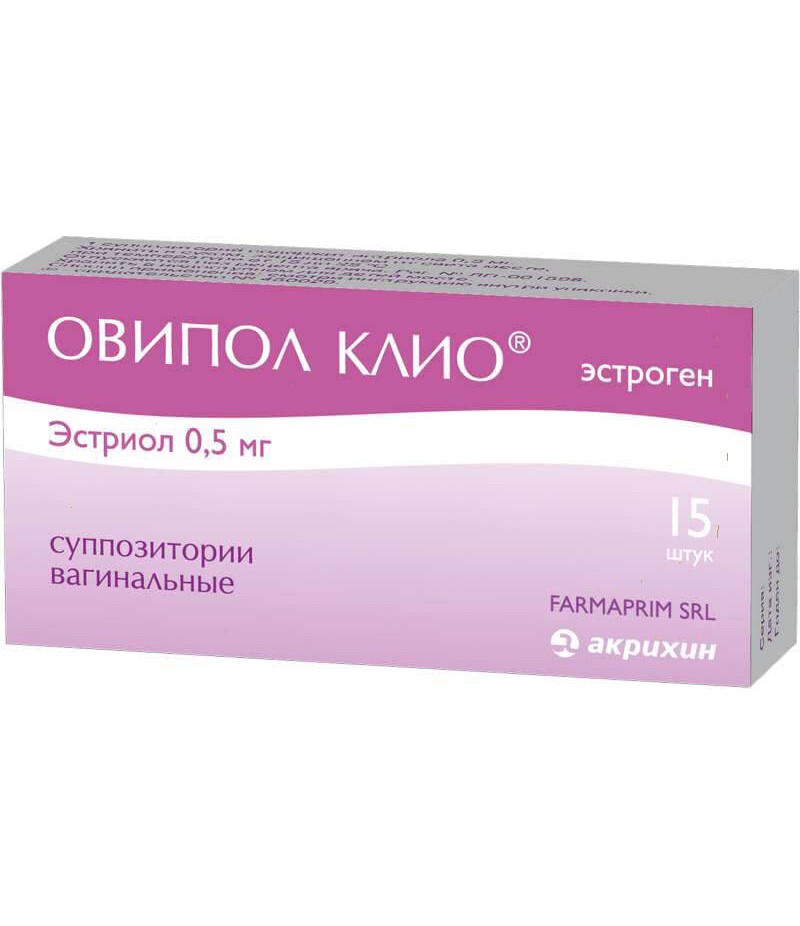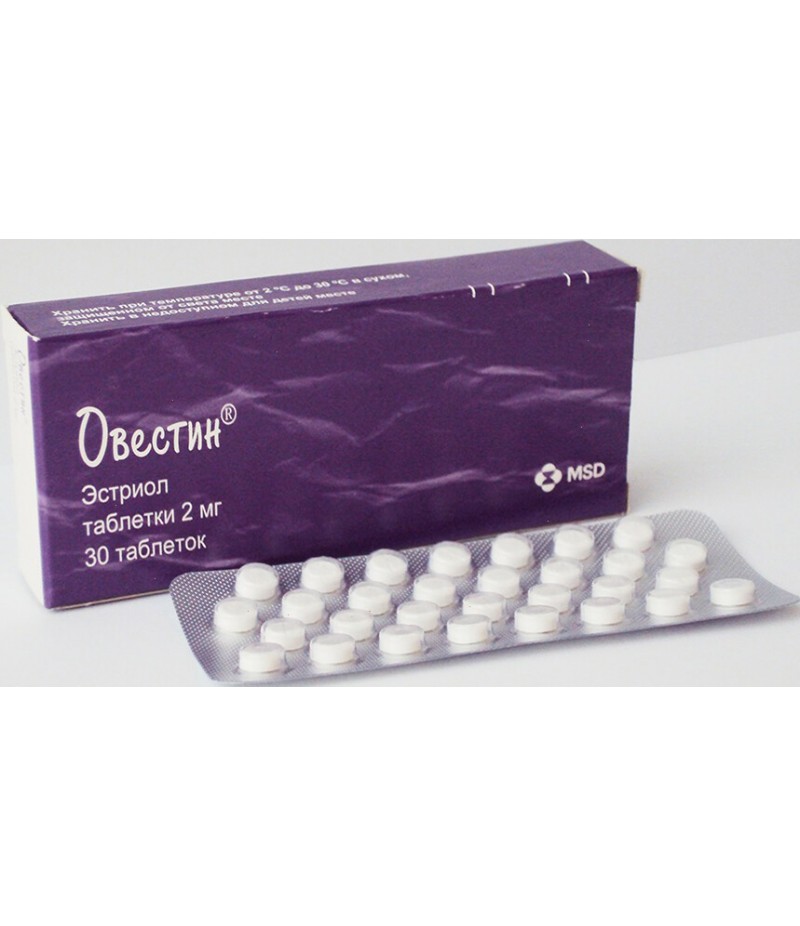Orniona cream 0.1% 15ml
- $38.99
- 3 or more $38.75
- Availability:In Stock
Orniona instructionYou can buy Orniona hereCompositionCream vaginal 1 gactive substance:estriol 1 mgexcipients: glycerol (glycerin) - 120 mg; stearyl alcohol 88.4 mg; ethanol 95% (95% ethyl alcohol) -
Tags: cream
Orniona instruction
You can buy Orniona here
Composition
Cream vaginal 1 g
active substance:
estriol 1 mg
excipients: glycerol (glycerin) - 120 mg; stearyl alcohol 88.4 mg; ethanol 95% (95% ethyl alcohol) - 50 mg; cetyl alcohol - 36.7 mg; macrogol 25 cetostearyl ether - 32.4 mg; cetyl palmitate - 15 mg; sorbitan stearate - 7.6 mg; lactic acid (in terms of 100%) - 4 mg; sodium hydroxide - 1.2 mg; chlorhexidine dihydrochloride (chlorhexidine hydrochloride) - 0.1 mg; purified water - up to 1 g
Description of the dosage form
Cream: uniform white or almost white in color, with a weak specific smell.
pharmachologic effect
Pharmacological action - estrogen.
Pharmacodynamics
Orniona Cream contains estriol - an analogue of the natural female hormone. Estriol is used to correct estrogen deficiency in women in the period of pre- and postmenopause. Effective in the treatment of urogenital disorders. In the case of atrophy of the epithelium of the vagina and cervix, estriol suppresses these disorders, helps to restore the normal microflora and physiological pH of the vagina, thereby increasing the resistance of the epithelium of the vagina to infectious and inflammatory processes. Unlike other estrogens, estriol interacts with the nuclei of endometrial cells for a short period of time, so that the daily use of the recommended daily dose does not result in proliferation of the endometrium. Thus, there is no need for cyclic additional administration of progestogens, and in the post-menopausal period no withdrawal bleeding is observed.
Pharmacokinetics
Suction and distribution. Intravaginal administration of estriol ensures optimal local bioavailability of the drug substance. After absorption, estriol also enters the general circulation, which is manifested by a rapid increase in the concentration of unconjugated estriol in the blood plasma with a maximum value of 1–2 hours after administration. Unlike other estrogens, up to 90% of estriol in blood plasma is associated with albumin, and not with SHBG.
After intravaginal administration of 0.5 mg of estriol, Cmax in plasma is approximately 100 pg / ml, Cmin is approximately 25 pg / ml, and the average concentration is approximately 70 pg / ml. After 3 weeks of daily application of 0.5 mg of vaginal estriol, the average concentration decreased to 40 pg / ml.
The metabolism of estriol in the body is reduced to its conjugation and deconjugation during enterohepatic recirculation.
Inference. Since estriol is the end product of metabolism, it is mainly excreted by the kidneys in conjugated form. Only a small proportion (2%) is excreted through the intestines, mostly in an unconjugated form. T1 / 2 is about 6–9 hours.
Indications of the drug Orniona
hormone replacement therapy for the treatment of mucosal atrophy of the lower urinary and genital tracts associated with estrogen deficiency in postmenopausal women;
pre- and postoperative therapy in postmenopausal women who are to or have already undergone vaginal access surgery;
for diagnostic purposes with unclear results of cytological examination of the cervical epithelium on the background of atrophic changes (as an adjunct).
Contraindications
established hypersensitivity to the active substance or to any of the excipients of the drug;
untreated endometrial hyperplasia;
an established, history or suspected breast cancer;
diagnosed estrogen-dependent tumors or suspicion of them (including endometrial cancer);
bleeding from the vagina of unknown etiology;
thrombosis (venous and arterial) and thromboembolism at present or in history (including deep vein thrombosis, thromboembolism of the pulmonary artery, myocardial infarction, stroke), cerebrovascular disorders;
conditions preceding thrombosis (including transient ischemic attacks, angina pectoris), now or in history;
congenital or acquired predisposition to the development of arterial or venous thrombosis, including deficiency of protein C, protein S or antithrombin III (see "Special instructions");
liver disease in the acute stage or a liver disease in history, after which the indicators of liver function did not return to normal;
porphyria;
pregnancy;
breastfeeding period.
With care: the presence of any of the following conditions / diseases at present, or in cases where such a condition / disease was noted earlier and / or worsened during previous pregnancies or hormone treatment carried out earlier - the patient should be under the direct supervision of a physician. It must be borne in mind that these conditions / diseases may recur or worsen during treatment with Orniona, especially if present:
- Leiomyoma (uterine fibroma) or endometriosis;
- risk factors for arterial or venous thrombosis and thromboembolism;
- risk factors for estrogen-dependent tumors, for example, 1st degree of heredity for breast cancer;
- arterial hypertension;
- benign liver tumors (for example, adenoma);
- diabetes mellitus with or without angiopathy;
- cholelithiasis;
- migraine or headache;
- Systemic lupus erythematosus;
- Endometrial hyperplasia in history;
- epilepsy;
- bronchial asthma;
- otosclerosis;
- familial hyperlipoproteinemia;
- pancreatitis.
Use during pregnancy and lactation
Orniona is intended for use in postmenopausal women. The use of the drug during pregnancy, with suspected pregnancy or during breastfeeding is contraindicated.
Side effects
Like any drug applied to the mucous membrane, Orniona cream can cause local irritation or itching.
Possible acyclic bleeding, breakthrough bleeding, metrorrhagia.
In rare cases, there may be tension, tenderness, sensitivity or an increase in the size of the mammary glands. As a rule, these side effects disappear after the first weeks of treatment, in addition, they may indicate the appointment of too high a dose of the drug.
Other adverse reactions occurring during estrogen monotherapy or combination therapy with estrogen and progestogen have been reported.
On the part of the digestive tract: nausea.
Liver and biliary tract: cholelithiasis.
Benign, malignant and unspecified neoplasms (including cysts and polyps): benign and malignant estrogen-dependent neoplasias, incl. cervical cancer, endometrial cancer (see "Contraindications" and "Special Instructions").
Mental Disorders: Dementia at the onset of HRT in continuous mode after 65 years (see "Special Instructions").
Genital and mammary gland organs: increased libido.
From the water and electrolyte exchange: fluid retention.
On the part of the skin and subcutaneous tissues: chloasma, erythema multiforme, erythema nodosum, hemorrhagic purpura.
There is evidence of the development of the risk of breast cancer, ovarian cancer, the risk of VTE, the risk of coronary artery disease, the risk of ischemic stroke (see "Special Instructions").
Interaction
In clinical practice, no interaction between estriol preparations for topical use and other drugs has been observed.
Estrogen metabolism can be enhanced when used in combination with compounds that induce enzymes involved in the metabolism of drugs (especially cytochrome P450 enzymes), such as anticonvulsants (including phenobarbital, phenytoin, carbamazepine), antimicrobial agents (in including rifampicin, rifabutin, nevirapine, efavirenz, ritonavir, nelfinavir), barbiturates.
Herbal preparations containing Hypericum perforatum (Hypericum perforatum) can induce estrogen metabolism.
Increased estrogen metabolism may lead to a decrease in their clinical effect.
Estriol enhances the action of lipid-lowering drugs; weakens the effects of male sex hormones, anticoagulants, antidepressants, diuretic, hypotensive, hypoglycemic drugs.
Drugs for general anesthesia, narcotic analgesics, anxiolytics, some antihypertensive drugs, ethanol reduce the effectiveness of Orniona.
Folic acid and thyroid means increase estrogenic effect of estriol.
There is evidence that estrogen, incl. estriol, can enhance the pharmacological action of corticosteroids and increase the activity of suxamethonia, theophylline and oleandomycin.
Dosage and administration
Intravaginally. Orniona cream should be inserted into the vagina before bedtime with a calibrated applicator. 1 dose (when filling the applicator to the ring mark) contains 0.5 g of Orniona cream, which corresponds to 0.5 mg of estriol.
Orniona cream can be used both in women with a history of hysterectomy and in women with an intact uterus.
When conducting HRT for the treatment of atrophy of the mucous membrane of the lower urinary and genital tracts associated with estrogen deficiency in postmenopausal women, 1 intravaginal administration of the cream is given daily for no more than 2 weeks, until symptoms are relieved. Further, the dose is gradually reduced to maintenance, depending on the clinical picture (for example, 1 administration 2 times a week).
With pre- and postoperative therapy in postmenopausal women who are to have or have already undergone surgery with vaginal access, 1 intravaginal cream is administered daily for 2 weeks before the operation; 1 administration 2 times a week for 2 weeks after surgery.
For diagnostic purposes, with unclear results of cytological examination of the cervical epithelium on the background of atrophic changes, 1 intravaginal administration of the cream is performed every other day for 1 week before taking the next smear.
If the next dose of the drug was missed, you should continue using the drug in the usual way, not filling the previously missed dose. You can not enter 2 doses of the drug in 1 day.
When starting or continuing the treatment of postmenopausal symptoms, it is necessary to apply the lowest effective dose for the shortest amount of time.
In women who do not receive drugs intended for HRT, or are transferred from the continuous intake of oral combination drugs for HRT, treatment with Orniona can be started on any day.
Women who are switching from a cyclic regimen of oral medications for HRT should begin treatment with Orniona 1 week after discontinuation of these drugs.
Introduction Technique
- unscrew the cap from the tube, turn it over and open the tube with a sharp tip;
- screw the applicator onto the tube;
- squeeze the tube so that the applicator is filled with cream until the piston stops;
- unscrew the applicator from the tube and close the tube with a cap;
- lying on his back, insert the applicator deep into the vagina and gently push the piston all the contents of the applicator;
- after using the applicator, remove the piston from the body and wash the piston and the body of the applicator in warm water with soap. Do not use synthetic detergents for this purpose. After washing, rinse the applicator with warm clean boiled water.
Do not put the applicator in hot water or boiling water.
Overdose with Orniona
With intravaginal administration, the probability of an overdose of the cream is low.
Symptoms: in case of accidental ingestion - nausea, vomiting, vaginal bleeding, headache.
Treatment: there is no specific antidote. If necessary, symptomatic therapy should be carried out.
special instructions
Atrophy of the mucous membrane of the lower urogenital tract, caused by estrogen deficiency, can manifest unpleasant sensations in the vagina (pain during intercourse, vaginal dryness, itching) and urination disorders (increased urinary frequency, mild urinary incontinence).
For the treatment of postmenopausal symptoms of HRT, it is necessary to begin only in relation to symptoms that adversely affect the quality of life. In all cases, it is necessary to conduct a thorough assessment of the risks and benefits of treatment at least once a year. HRT should be continued only during the period of time when the benefit exceeds the risk.
There is limited evidence of increased risk of HRT during the treatment of premature menopause. Due to the low absolute risk in younger women, the benefit-risk ratio is more favorable for them than for older ones.
Medical examination / observation
Before starting or resuming HRT, a detailed individual and family history should be collected. Based on the history, contraindications and warnings on the use of the drug, it is necessary to conduct a clinical examination, including examination of the pelvic organs and mammary glands.
During treatment, it is recommended to conduct a general medical and gynecological examination, including examination of the mammary glands. The frequency and nature of surveys are individual, but at least 1 time per year. Women should be informed about the need to inform the doctor about changes in the mammary glands. Research, including appropriate imaging techniques, such as mammography, should be carried out in accordance with generally accepted examination standards and depending on each individual case.
Therapy should be discontinued if a contraindication is detected and / or if the following conditions / diseases occur:
- jaundice and / or impaired liver function;
- A significant increase in blood pressure;
- the occurrence or resumption of migraine-type headache;
- pregnancy.
Endometrial hyperplasia and endometrial cancer
To prevent endometrial stimulation, the daily dose of Orniona should not exceed 1 administration (0.5 mg estriol), and this dose should not be applied daily for more than 4 weeks in a row. Vaginal bleeding in all cases require examination. The patient should be informed of the need to contact the doctor in case of the onset of vaginal bleeding.
Mammary cancer
HRT may increase mammographic density. This may complicate the X-ray diagnosis of breast cancer. Clinical studies have shown that the probability of increasing mammography density is lower in women receiving estriol treatment than in women receiving treatment with other estrogens.
Generalized evidence suggests an increased risk of breast cancer in women receiving combined estrogen and progestogen therapy, and possibly estrogen monotherapy.
In women receiving combined estrogen and progestogen therapy for more than 5 years, the risk of breast cancer increased by 2 times.
When estrogen monotherapy increases the risk of developing breast cancer is significantly lower than when combined with progestogens. The level of risk depends on the duration of HRT.
Ovarian cancer
Ovarian cancer develops much less frequently than breast cancer. Prolonged estrogen monotherapy (at least 5–10 years) was associated with a slight increase in the risk of ovarian cancer. Some studies suggest that combined HRT may increase the risk of ovarian cancer in a similar way or slightly. It is not known whether the risk is different with long-term use of low-dose estrogens (including Orniona) from that with monotherapy with other estrogens.
VTE
HRT is associated with an increased risk of developing VTE, i.e. DVT or PEH, 1.3–3 times. The likelihood of developing VTE during the first year of using HRT is higher than at a later date. In relation to the drug Orniona, this risk is unknown.
In patients with a congenital or acquired predisposition to the development of arterial or venous thrombosis, the risk of VTE is high, and HRT may further increase it. In this regard, such patients are contraindicated for HRT (see "Contraindications").
The generally accepted risk factors for VTE are estrogen intake, advanced age, extensive surgical interventions, prolonged immobilization, obesity (BMI over 30 kg / m2), pregnancy / postpartum period, SLE, and cancer. There is no consensus regarding the possible role of varicose veins in the development of VTE. After any surgical intervention it is necessary to carry out the prevention of VTE. If prolonged immobilization is associated with a planned operation, it is necessary to temporarily cancel HRT 4-6 weeks before the operation. Treatment should be resumed after the patient begins to walk.
With respect to patients who are already receiving treatment with anticoagulants, careful consideration of the benefit-risk ratio of HRT is required.
If Orniona is prescribed as a pre- and postoperative treatment, prevention of thrombosis should be considered.
In the absence of VTE in a patient in history, but in the presence of thrombosis at a young age with her immediate family, the patient can be offered a screening examination, having previously discussed all of its limitations (screening allows only a number of hemostasis disorders to be detected). If a hemostasis defect is found that does not correspond to the disease in relatives, or if a serious defect is detected (including a deficiency of antithrombin III, protein S or protein C, or a combination of these defects), HRT is contraindicated.
If, after initiation of treatment with Orniona, VTE develops, the treatment should be stopped. The patient should be informed of the need to immediately consult a doctor if she feels possible signs of VTE (including painful swelling of the lower extremity, sudden chest pain, shortness of breath).
Ischemic heart disease
In randomized controlled trials, no results were obtained that would indicate that combination therapy with estrogen and progestogen and estrogen monotherapy could prevent the development of myocardial infarction in women with or without coronary artery disease.
According to randomized controlled studies, the risk of coronary artery disease with estrogen monotherapy did not increase in uterine patients.
The risk of coronary artery disease is slightly increased with combined HRT with estrogen and progestogen in patients over 60 years of age.
Ischemic stroke
Combined estrogen and progestogen therapy and estrogen monotherapy are associated with an increase in the risk of ischemic stroke by 1.5 times. The relative risk does not change depending on age and time after menopause. However, the initial risk of stroke is more dependent on age, and the overall risk of stroke with HRT increases with age.
The risk of hemorrhagic stroke with HRT does not increase.
Other states
Estrogens can cause fluid retention, and therefore patients with impaired renal function and cardiovascular insufficiency should be under close medical supervision.
With initial hypertriglyceridemia, the concentration of TG in the blood plasma against the background of HRT may increase, as a result of which pancreatitis may develop.
Estriol is a weak inhibitor of gonadotropin and has no other significant effects on the endocrine system.
HRT does not improve cognitive function. Evidence of an increased risk of developing dementia was obtained in patients who began using combination therapy or monotherapy in continuous mode after 65 years.
In the presence of vaginal infections, concomitant specific treatment is recommended.
The drug Orniona includes cetyl and stearyl alcohol, which can cause local skin reactions (including contact dermatitis).
Influence on ability to steer vehicles and work with mechanisms. Estriol does not affect movement coordination, concentration, and ability to drive vehicles and other mechanisms.
Release form
Vaginal cream, 0.1%. On 15 or 30 g in an aluminum tube. Each tube together with the applicator is placed in a pack of cardboard.
Storage conditions of the drug Orniona
At a temperature not higher than 25 ° C.
Keep out of the reach of children.
Terms of sell
You can buy Orniona without a prescription.

